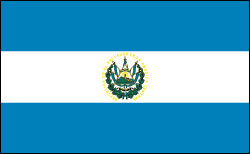- / Countries of the World
- / history
El Salvador History

Index
El Salvador Suffers During 12-Year Civil War
In the 1970s, discontent with societal inequalities, a poor economy, and the repressive measures of dictatorship led to civil war between the government, ruled since 1961 by the right-wing National Conciliation Party (PCN), and leftist antigovernment guerrilla units, whose leading group was the Farabundo Martí National Liberation Front (FMLN). The U.S. intervened on the side of the military dictatorship, despite its scores of human rights violations. Between 1979 and 1981, about 30,000 people were killed by right-wing death squads backed by the military. José Napoleón Duarte—a moderate civilian who was president from 1984 to 1989—offered an alternative to the political extremes of right and left, but Duarte was unable to end the war. In 1989, Alfredo Cristiani of the right-wing Nationalist Republican Alliance (ARENA) was elected. On Jan. 16, 1992, the government signed a peace treaty with the guerrilla forces, formally ending the 12-year civil war that had killed 75,000.
In 1998, Hurricane Mitch devastated the country, leaving 200 dead and over 30,000 homeless. In Jan. and Feb. 2001, major earthquakes struck El Salvador, damaging about 20% of the nation's housing. An even worse disaster befell the country in the summer when a severe drought destroyed 80% of the country's crops, causing famine in the countryside.
In 2004, Antonio Saca of ARENA was elected president. The nation implemented a free-trade agreement (CAFTA) with the U.S. in March 2006, the first Central American country to do so.
Mauricio Funes, a former journalist and member of the FMLN party, was elected President in March 2009, ending two decades of conservative rule in El Salvador.
